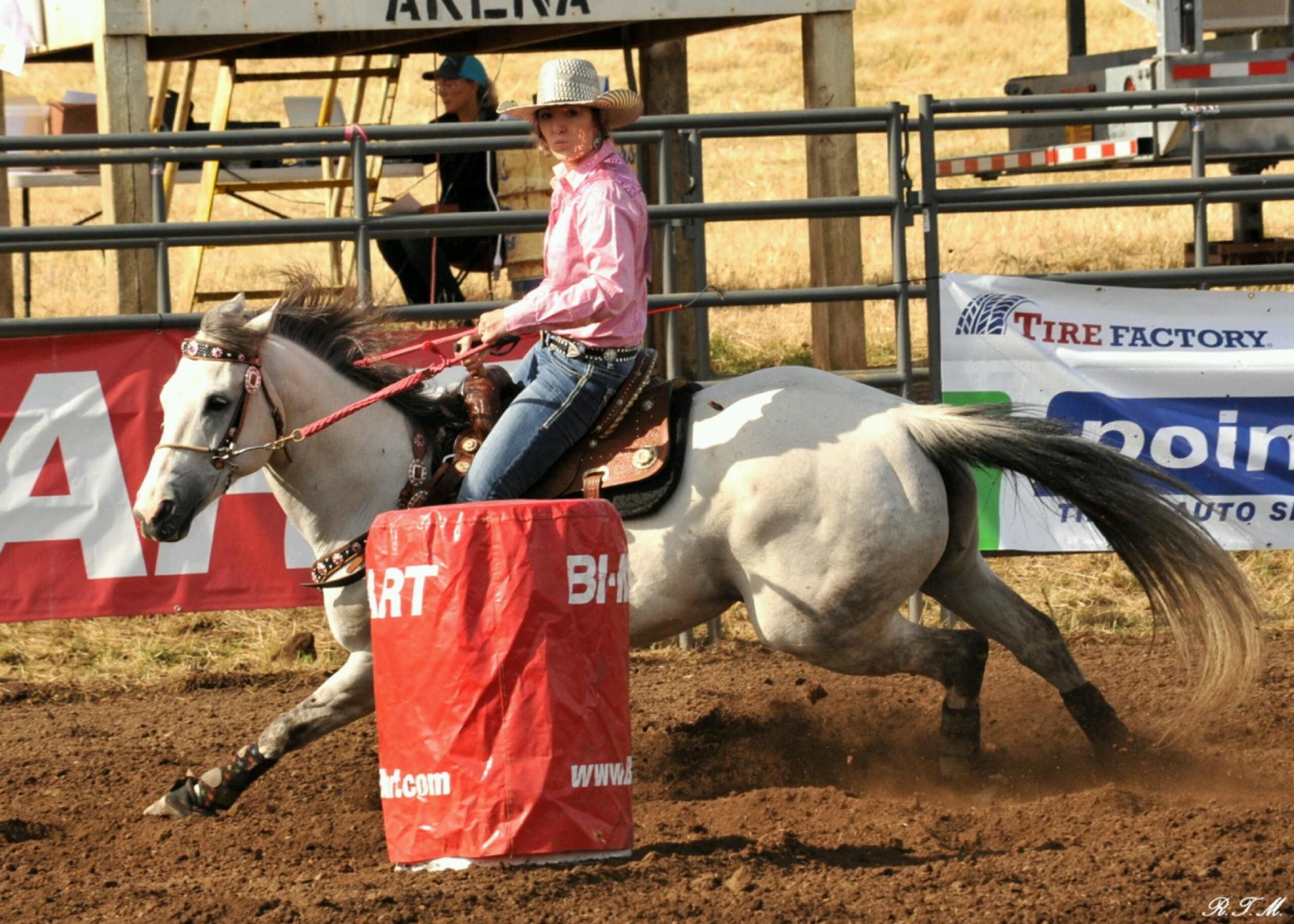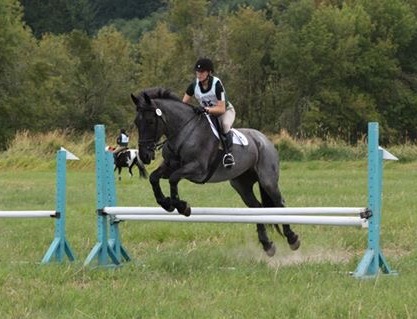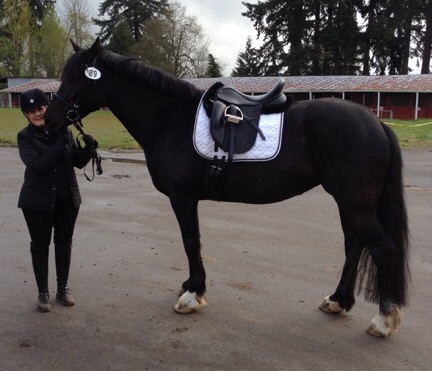Equine Sports Medicine
Equine sports medicine is a specialized field of veterinary medicine that focuses on the diagnosis, treatment, and prevention of injuries and conditions in horses involved in athletic activities. It combines elements of veterinary medicine, rehabilitation, and sports science to optimize the health and performance of equine athletes.
At Oakhurst our veterinarians encompasses various disciplines, including orthopedics, lameness evaluation, diagnostic imaging, regenerative medicine, rehabilitation, and nutrition. The goal at Oakhurst is to ensure the overall well-being of the horse and enhance its athletic performance while minimizing the risk of injuries.
Some common conditions and issues addressed in equine sports medicine include:
Lameness: Diagnosing and treating lameness is a significant aspect of equine sports medicine. It involves assessing gait abnormalities, performing diagnostic tests like nerve blocks, and utilizing imaging techniques such as radiography, ultrasound, and MRI.
Musculoskeletal injuries: Equine athletes are prone to various musculoskeletal injuries such as tendon and ligament strains, muscle tears, and joint problems. Sports medicine veterinarians employ treatments like therapeutic ultrasound, laser therapy, shockwave therapy, and regenerative medicine techniques like stem cell therapy and platelet-rich plasma (PRP) to promote healing.
Performance evaluation: Equine sports medicine specialists use objective assessments to evaluate a horse's athletic abilities, identify areas for improvement, and develop customized training and conditioning programs to enhance performance.
Rehabilitation: When horses suffer from injuries, they often require rehabilitation programs to aid in their recovery and return to full function. This may involve exercises, physical therapy, hydrotherapy, and other modalities tailored to the specific needs of the horse.
Nutrition and preventive care: Optimal nutrition plays a crucial role in the performance and overall health of equine athletes. Sports medicine veterinarians may provide guidance on appropriate diets, supplements, and preventive care measures to minimize the risk of injuries and maintain the horse's well-being.
Equine sports medicine veterinarians often work closely with trainers, riders, and other members of the horse's care team to provide comprehensive care and support for equine athletes. Their expertise helps in managing and preventing injuries, maximizing performance, and ensuring the longevity of the horse's athletic career.
Equine Lameness Exam
An equine lameness exam, also known as a lameness evaluation or lameness examination, is a diagnostic procedure performed by a veterinarian to assess and diagnose lameness in horses. Lameness refers to any abnormality or impairment in a horse's gait or movement, usually due to pain or discomfort in the musculoskeletal system.
During an equine lameness exam, the veterinarian will typically follow a systematic approach to identify the source and cause of the lameness. The exam may involve several steps and techniques, including:
History and observation: The veterinarian will gather information about the horse's medical history, previous injuries, recent changes in management or exercise routines, and any observable abnormalities in gait or behavior.
Physical examination: The veterinarian will conduct a thorough physical examination of the horse, assessing overall body condition, muscle tone, joint range of motion, and palpation of specific areas to identify any signs of pain, swelling, or heat.
Flexion tests: The veterinarian may perform flexion tests on the horse's limbs, which involve applying pressure or flexing specific joints for a brief period, followed by observing the horse's gait immediately afterward. This helps to localize the source of lameness to a particular limb or joint.
Evaluation in motion: The horse is evaluated at various gaits, including walking, trotting, and sometimes cantering, either on a straight line or in circles. The veterinarian will observe the horse's movement, looking for any asymmetry, irregularities, or abnormal behavior that may indicate lameness.
Palpation and manipulation: The veterinarian may further examine specific areas of concern through palpation, joint manipulation, or hoof testing to identify any pain or sensitivity.
Diagnostic imaging: If necessary, the veterinarian may recommend additional diagnostic tests such as radiographs (X-rays), ultrasound, or other imaging modalities to visualize and evaluate the internal structures of the horse, such as bones, joints, tendons, or ligaments.
Based on the findings from the lameness exam, the veterinarian will then develop a diagnosis and treatment plan. Treatment may involve rest, medication, physical therapy, corrective shoeing, joint injections, or surgery, depending on the underlying cause of lameness. The goal is to alleviate the horse's pain, promote healing, and restore normal function and soundness.
Shockwave Therapy
Equine shockwave therapy is a non-invasive treatment modality that uses high-energy sound waves to stimulate healing in horses. It is commonly used in veterinary medicine to manage various musculoskeletal conditions and promote tissue repair.
The treatment involves the use of a shockwave machine, which generates and delivers focused sound waves to targeted areas of the horse's body. These sound waves are transmitted through the skin and underlying tissues, reaching the injured or affected area. When the sound waves interact with the tissues, they create mechanical pressure and microtrauma, which triggers a series of biological responses that promote healing.
The exact mechanisms of how shockwave therapy works are not fully understood, but it is believed to have several effects on the body, including:
Neovascularization: Shockwaves stimulate the formation of new blood vessels, improving blood flow to the treated area. This increased blood supply delivers oxygen, nutrients, and immune cells, aiding in tissue repair and regeneration.
Analgesia: Shockwave therapy can help alleviate pain by interrupting pain signals and reducing nerve sensitivity. It may also promote the release of endorphins, which are natural pain-relieving substances.
Cellular effects: Shockwaves stimulate cellular activity, including the production of growth factors, collagen, and other substances involved in tissue healing. This can accelerate the repair of damaged tissues, such as tendons, ligaments, and bones.
Equine shockwave therapy is often used in the management of various conditions, such as:
Tendon and ligament injuries: It can be effective in treating conditions like tendonitis, desmitis, and suspensory ligament injuries.
Bone fractures and non-unions: Shockwaves can help promote bone healing and speed up the repair process in cases of fractures or delayed union.
Back pain and muscle soreness: It can be used to alleviate muscular pain and tension in the horse's back.
Wound healing: Shockwave therapy may aid in the healing of certain types of wounds, including chronic or non-healing wounds.
It's important to note that equine shockwave therapy should be administered by a qualified veterinarian who has experience with this treatment modality. The number of treatment sessions and the intensity of the shockwaves will depend on the specific condition being treated and the horse's individual needs.
Class IV Laser Therapy
Laser therapy is a valuable medical technique that utilizes laser energy to achieve therapeutic effects. It has proven to be effective in various applications, such as speeding up the healing process, reducing pain, and alleviating inflammation in surrounding tissues. Laser therapy is suitable for both acute and chronic conditions, and it is generally well tolerated by patients due to its non-invasive nature.
The fundamental mechanism behind laser therapy is photobiomodulation, which refers to a chemical change that occurs within cells when they absorb laser light. This process enhances cellular function and facilitates the repair and regeneration of damaged tissues.
Laser therapy can be employed to address a wide range of conditions, including but not limited to:
Suspensory desmitis
Tendonitis
Muscle injuries
Neck pain
Back pain
Wounds
Joint arthritis
Splints
Stimulation of acupuncture points.
An important advantage of laser therapy is that it does not typically require sedation, making it a convenient and stress-free treatment option for horses. The frequency and duration of laser therapy sessions can vary depending on the specific condition being treated, and it is best determined by a qualified veterinarian who will assess the horse's individual needs.
Laser therapy offers a non-invasive and painless approach to promoting healing and relieving discomfort in horses, making it a valuable tool in veterinary medicine.
Endoscopy
We employ flexible endoscopes for the diagnosis and evaluation of various nose, throat, and respiratory issues, enabling us to provide effective medical care. Our inventory comprises two types of endoscopes: a handheld portable endoscope and a video endoscope. The video endoscope boasts a camera chip positioned at the end of a slender tube, while the handheld endoscope allows direct viewing through the eyepiece. These advanced tools grant us the ability to visually examine specific respiratory conditions, such as dorsal displacement of the soft palate or left laryngeal hemiplegia. Moreover, they facilitate the collection of fluid samples from the trachea, lungs, or guttural pouches, aiding in accurate diagnostics.







